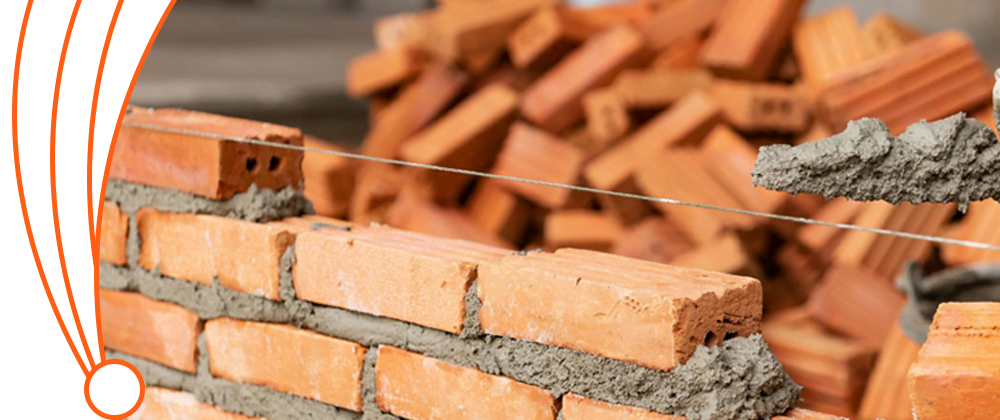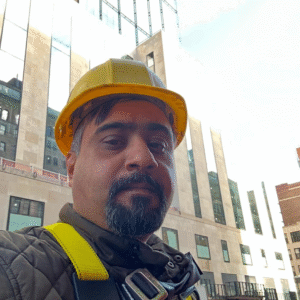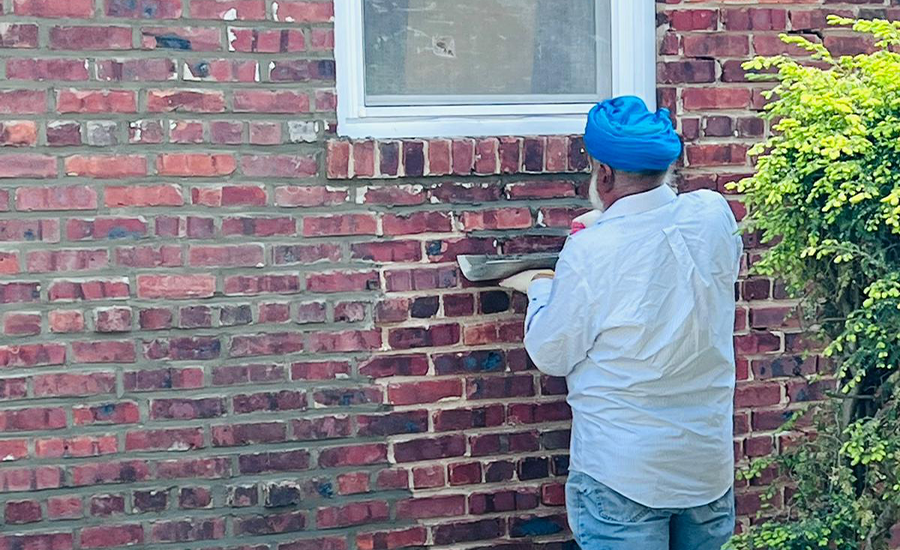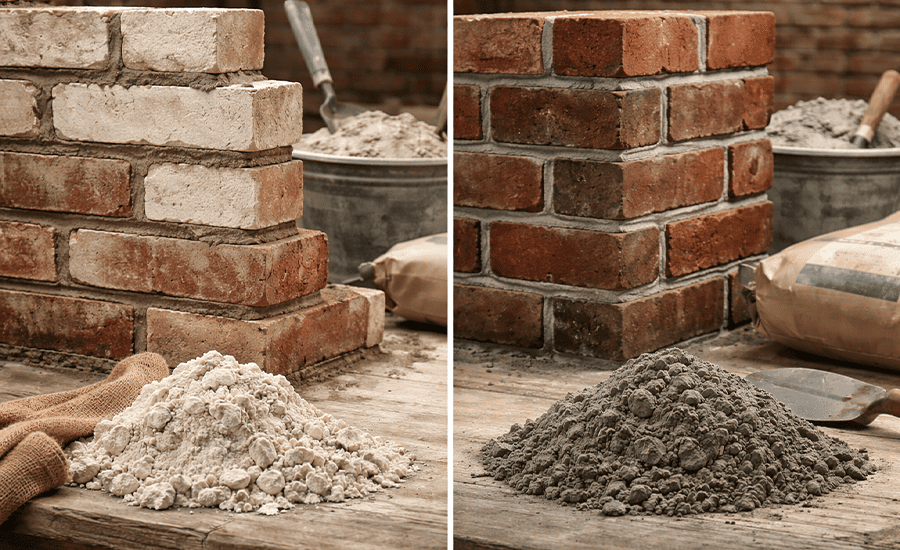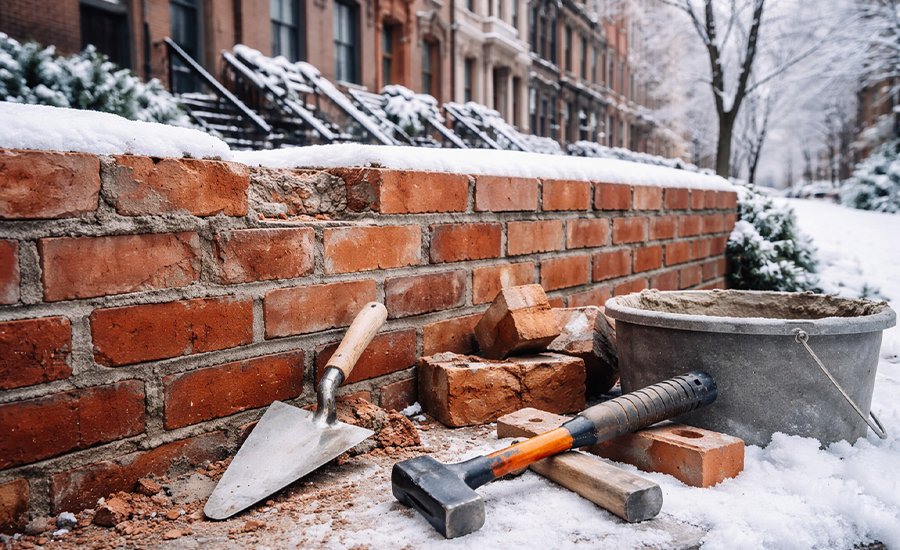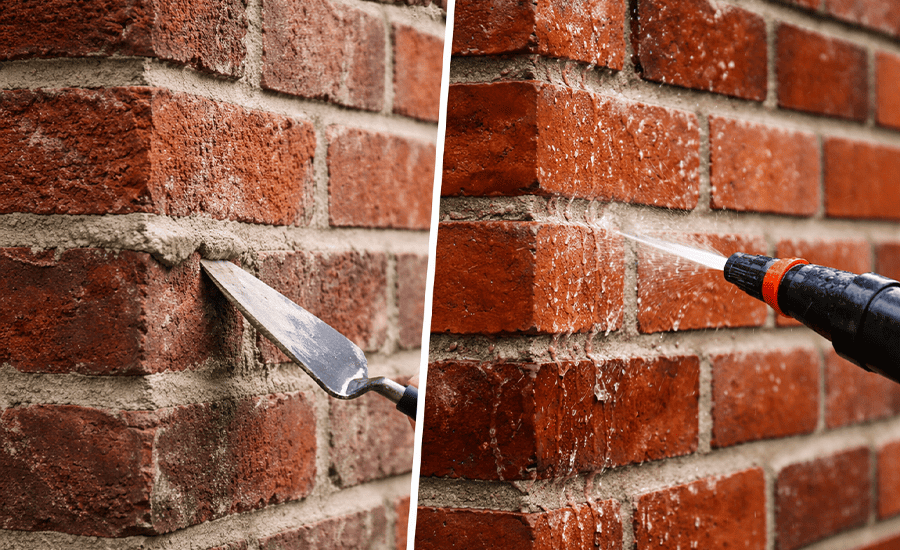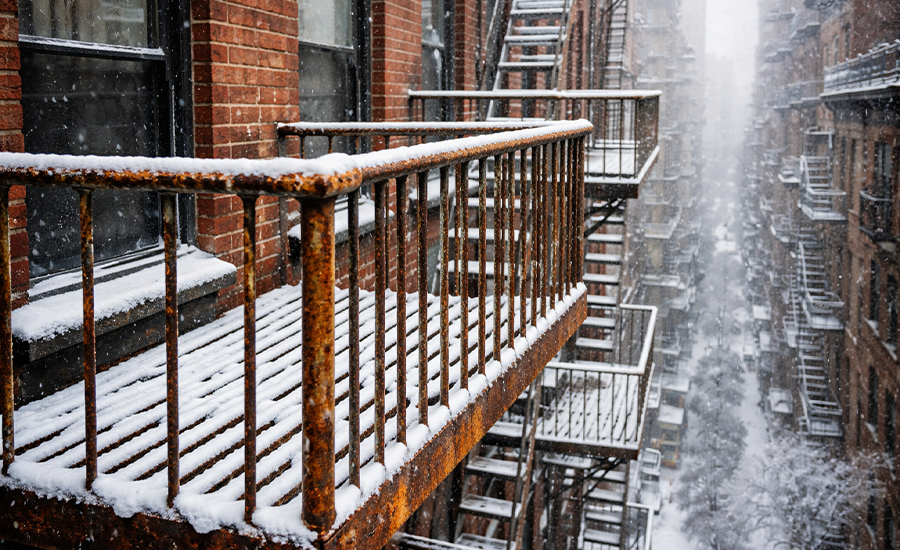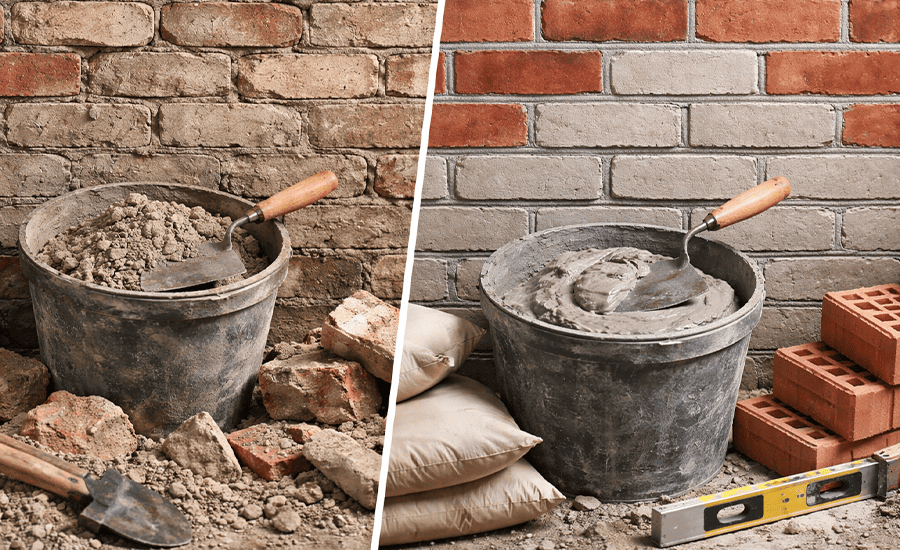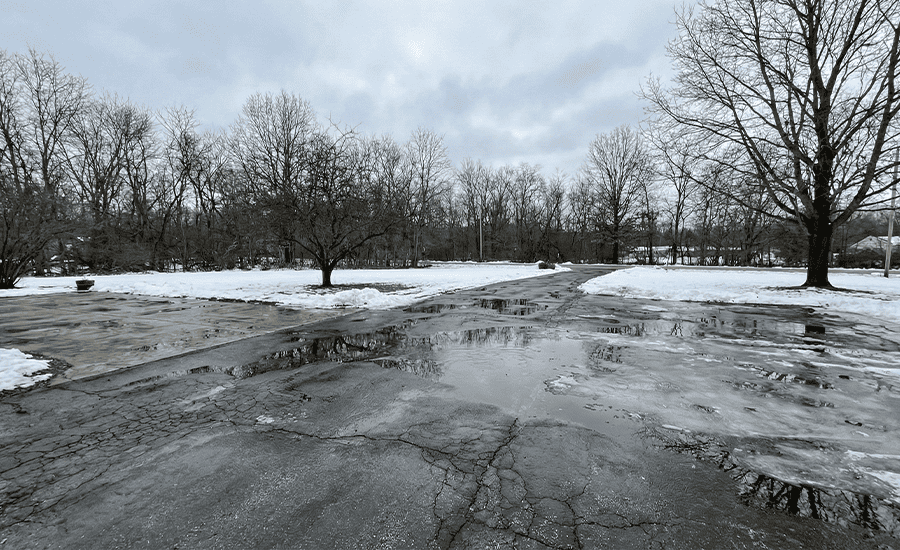Brick-pointing plays a critical role in maintaining the integrity and appearance of any masonry structure. As discussed in “What is brick pointing?“, here are detailed insights and a definition. But to be more precise, over time, the mortar becomes weak because of exposure to harsh weather, leading to gaps in joints. This leads to water damage, which weakens the stability of the whole wall and can even lead to structural failure of the entire building.
The above issues of concern mean that the building is protected when they are addressed through brick repair and the brickwork appearance is restored. Proper pointing ensures the mortar bonds tightly, preventing moisture infiltration and reinforcing the structure. This combination of functionality and visual appeal makes brick pointing an essential maintenance step for preserving long-lasting and reliable masonry.
At Sardar Restoration Corp,
we emphasize that proper brick pointing not only restores the visual appeal but also ensures structural integrity by preventing moisture damage and reinforcing masonry durability.
Purpose of Brick Pointing
Repointing or brick pointing is a good practice, which owners of structures with a brick face should undertake to maintain their structures.
Let’s explore its purpose in detail under key areas:
Restoring Mortar Joints
Due to weathering, temperature fluctuations, and environmental exposure, the mortar laying bricks tends to crumble and weaken with time. As mortar erodes, it crumbles, creating space and reducing the bond between the bricks or blocks. Brick-pointing extracts the spoilt mortar and then fills it with a new, robust mortar to rejuvenate this essential bond.
Preventing Water Damage
Water intrusion is one of the main reasons brick pointing is most commonly used. Loose or missing mortar joints expand the penetration of water into the structure, causing problems such as mold formation, frost attack, and weakening, among others. Proper pointing effectively fixes these issues and makes the structure watery and strong.
Learn how brick pointing prevents water damage and protects structures from seepage issues.
Improving the Beauty of Brickwork
From the outside, brick pointing can be seen as aesthetic, enhancing the beauty of a brick structure. Additionally to improving the structural integrity of the building, pointing will raise the appearance of the building to a higher level, making the property more appealing and, therefore, more valuable.
Prolonging Structural Life
Brick-pointing is the most preventive measure, helping to prevent the structure from further damage. Periodic maintenance helps to avoid the need for future expensive brick repair works and contributes to the stability of the building in the future.
Weather Resistance
Brick-pointing enhances the reinforcement of masonry constructions from adverse weather conditions such as rainfall, snow, and wind. Sealing of mortar joints avoids water penetration, leading to freeze damage due to freezing ground or erosion due to long-term exposure to water. This guarantees the sealing of the structure to diminish its vulnerability to fluctuating weather conditions, especially in certain regions with bad weather.
Climate Adaptation
In areas where conditions vary significantly, the stress due to temperature variations and contractions weakens the bond between bricks and mortar. Correct pointing helps to cope with these stresses and retains the overall integrity of the construction.
Atmospheric Protection
Buildings are exposed to water, wind-driven rains, and chemicals that etch brick and mortar, especially in high pollution levels. Brick-pointing acts like a shield, allowing these atmospheric pollutants to slightly affect the brick, prolonging the masonry’s life.
Building Necessity
When it comes to construction work, brick pointing is vital in protecting structures. Lack of or cracked mortar also reduces the load-bearing capability, weakening walls or even causing structures to collapse in extreme cases. Thus, pointing to masonry joints as a practice of reconstructing the destroyed parts of the structure is a requirement rather than a choice.
Explore the role of brick pointing in seismic retrofitting for earthquake resilience.
Aesthetic Preservation
Another reason brick pointing is important is the desire to maintain a building’s aesthetics. For example, pointing is used in historic buildings to help maintain the beauty of their brickwork without compromising the building’s original design and preventing it from deteriorating.
Energy Efficiency
Small and large splits in the joints result in drafts and increased heat loss in structural frameworks, making them less energy efficient. The gaps that this process fills also improve the house’s insulation because it controls the airflow indoors, thus managing the temperatures and energy spent in the process.
Longevity of Materials
Brick-pointing prevents the deterioration of building materials due to the negative effects of the environment. Properly sealed mortar does not crack, hold water, or cause brick spalling, increasing the masonry’s longevity while keeping repair work to a minimum.
See how brick pointing helps maintain masonry structures and prolongs durability.
Signs That Brick Pointing Is Needed
Recognizing the signs that brick pointing is needed is crucial for maintaining your structure’s strength, safety, and longevity.
Visible Cracks in Mortar Joints
- What It Indicates: Cracks in the mortar joints are one of the most obvious signs of deterioration. These cracks can allow water to seep in, weakening the structure over time.
- When to Act: Address cracks promptly to prevent water infiltration and avoid further damage.
Missing or Eroded Mortar
- What It Indicates: Mortar erosion or gaps between bricks weaken the bond that holds them together, reducing structural stability.
- When to Act: Repoint the bricks as soon as erosion is noticed, significantly if the depth of the missing mortar exceeds 6mm (¼ inch).
Water Damage or Damp Walls
- What It Indicates: Damp spots, water stains, or efflorescence (white, powdery residue) on walls suggest water infiltration through deteriorated mortar.
- When to Act: Immediately, as prolonged water damage can compromise the building’s structural integrity.
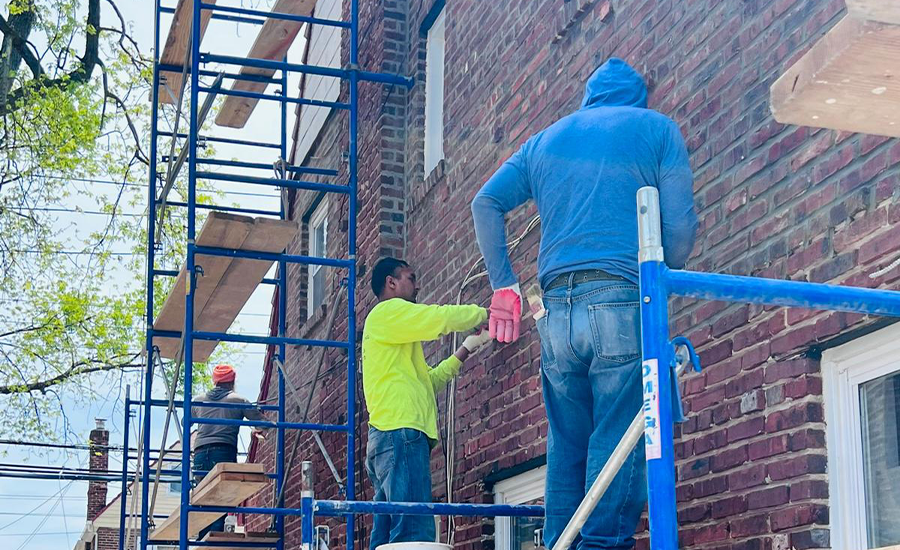
Loose or Wobbly Bricks
- What It Indicates: If bricks feel loose or move when touched, it’s a sign that the mortar holding them together has failed.
- When to Act: Repoint the structure promptly to prevent bricks from falling and causing further damage.
Aged Mortar
- What It Indicates: Mortar typically has a lifespan of 20-30 years, depending on environmental conditions. Older mortar becomes brittle and loses its bonding capacity.
- When to Act: Regular inspections are advised for buildings older than 20 years to determine whether repointing is needed.
What Is The Difference Between Tuckpointing And Brick Pointing?
We provide a detailed comparison between tuckpointing and brick pointing to help you understand their differences and applications. Read on to learn more!
| Feature | Tuckpointing | Brick Pointing |
|---|---|---|
| Definition | A decorative technique where two contrasting colors of mortar are used to create the illusion of fine joints. | The process of repairing or replacing deteriorated mortar between bricks to restore structural integrity. |
| Purpose | Primarily aesthetic, enhancing the visual appeal of masonry by mimicking precise, thin joints. | Functional, aimed at strengthening and stabilizing the brick structure. |
| Materials Used | Two types of mortar: one to match the brick color and another contrasting color for thin, visible lines. | A single type of mortar, typically chosen to match the original mortar’s color and texture. |
| Application Areas | Mostly used on decorative brickwork or historic buildings to enhance their appearance. | Applied to any brick structure where the mortar has deteriorated, regardless of style or design. |
| Labor Intensity | More labor-intensive due to the need for precision and the application of two mortar layers. | Less labor-intensive as it involves removing damaged mortar and filling it with new material. |
| Cost | Generally more expensive because of the intricate work and aesthetic focus. | Usually more affordable since it focuses on repair rather than decoration. |
| Longevity | Primarily for aesthetic purposes, it may require maintenance if subjected to structural stress. | Long-lasting and essential for preserving the structure’s integrity. |
| When to Use | For improving the appearance of a structure, especially historical or decorative facades. | For repairing damaged mortar to prevent structural issues and water damage. |
Sardar Restoration: Your Trusted Partner for Brickwork Maintenance
Brick-pointing services offered at Sardar Restoration Corp are ideal and professional while giving your property the most enduring and stylish look. Our technical staff helps protect your masonry from atmospheric influences, rapid wear, and moisture penetration on your property’s façade and structure. From historical restoration to urban renewal to upkeep, our brick-pointing solutions prioritize safety and amplify brickwork appeal. Reliability, durability, and beauty are three provisions that Sardar Restoration Corp will provide to your building. Come to us for a meeting and work with the best here!
Wherever you are, our services are tailored to meet local needs. Contact us today at (+1) 917-355-8556 or sardarrestoration@gmail.com, or visit us at 2770 Fish Ave, Bronx, NY 10469, United States. Let us bring excellence to your next project!
FAQs
How often should brick be repointed?
Brick repointing is generally needed every 20-30 years, depending on the quality of the mortar and exposure to environmental elements. Regular inspections, especially for older structures, can help identify issues early.
Read more in detail to understand the factors influencing repointing frequency.
How long should brick pointing last?
Correctly done brick pointing can last up to 30 years or more, depending on the mortar quality and maintenance. Environmental conditions, such as freeze-thaw cycles, can affect longevity.
Read more in detail about how to maximize the lifespan of repointed bricks.
Is repointing brick intricate?
Repointing bricks requires precision and skill to remove old mortar without damaging the bricks and to apply new mortar seamlessly. While DIY options exist, hiring professionals ensures durability and aesthetic consistency.
To understand the challenges involved, read more about the difficulty of repointing bricks.
Is brick repointing structural?
Yes, repointing is structural as it restores the integrity of mortar joints, which hold the bricks together and distribute weight evenly. It also prevents water infiltration, which can compromise the structure over time.
Why is repointing necessary?
Repointing prevents water damage, restores structural strength, and enhances the appearance of brickwork. It’s a vital maintenance step to prolong the lifespan of buildings and avoid costly repairs.
Read more in detail about its importance in maintaining masonry.
How deep should brick pointing be?
Brick pointing should generally be twice as deep as the wide mortar joint. This ensures a strong bond and long-lasting repair.
What happens if you don’t tuckpoint brick?
Failure to tuckpoint bricks can lead to water infiltration, structural weakening, and increased susceptibility to freeze-thaw damage. Over time, bricks may loosen or fall out, requiring extensive repairs.
Ignoring tuckpointing leads to water infiltration, weakening mortar joints. Find out how it affects long-term brick health in this guide.
Do bricklayers do pointing?
Yes, bricklayers are skilled in both laying bricks and performing pointing. They ensure that mortar joints are adequately finished during construction or repaired in existing structures.
For more details on how bricklayers handle pointing and its role in masonry, read our in-depth guide on bricklayers and pointing.
How does brick pointing enhance wall insulation?
Proper brick pointing seals gaps in mortar joints, reducing air drafts and improving energy efficiency. It also prevents water infiltration, which can reduce insulation effectiveness.
Proper insulation is key to energy efficiency. Discover how brick pointing enhances wall insulation and improves your building’s thermal performance.
Can brick pointing prevent pest infestations?
Yes, brick pointing seals cracks and gaps in mortar joints, blocking entry points for pests like insects and rodents. This helps maintain buildings’ structural and sanitary integrity.
Learn more about how brick pointing acts as a protective barrier against pest infestations and strengthens structural integrity.
